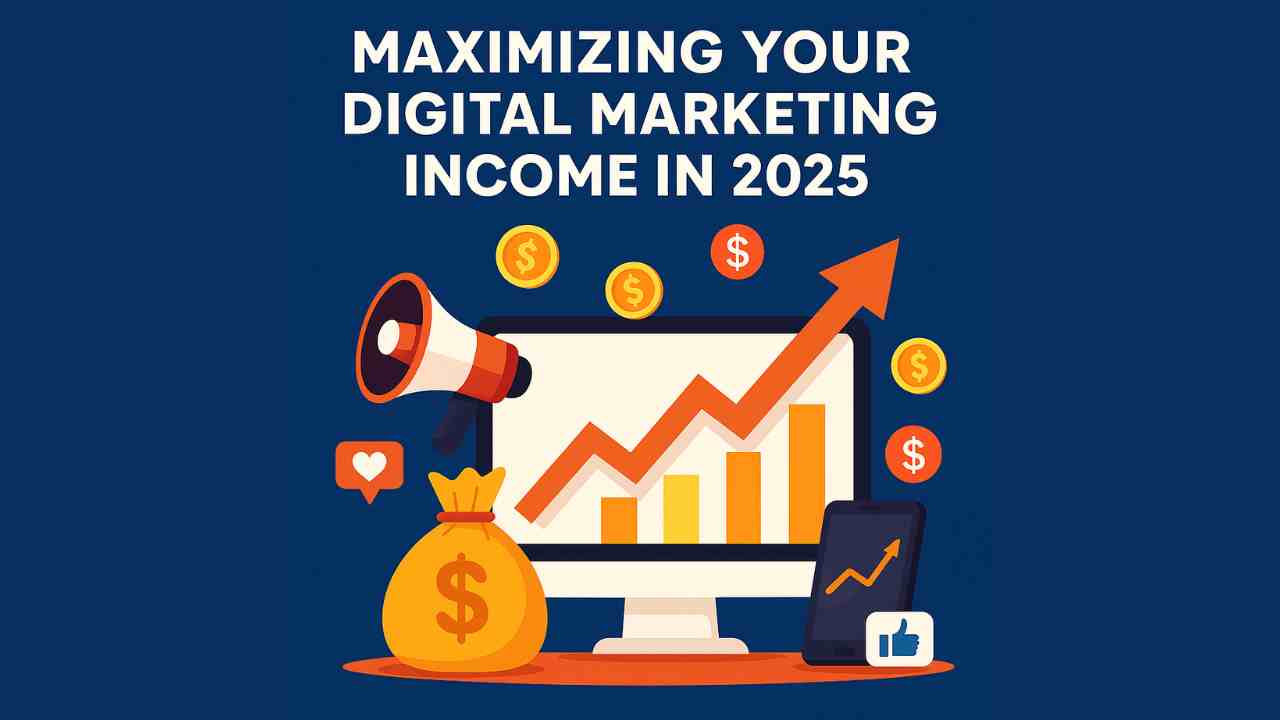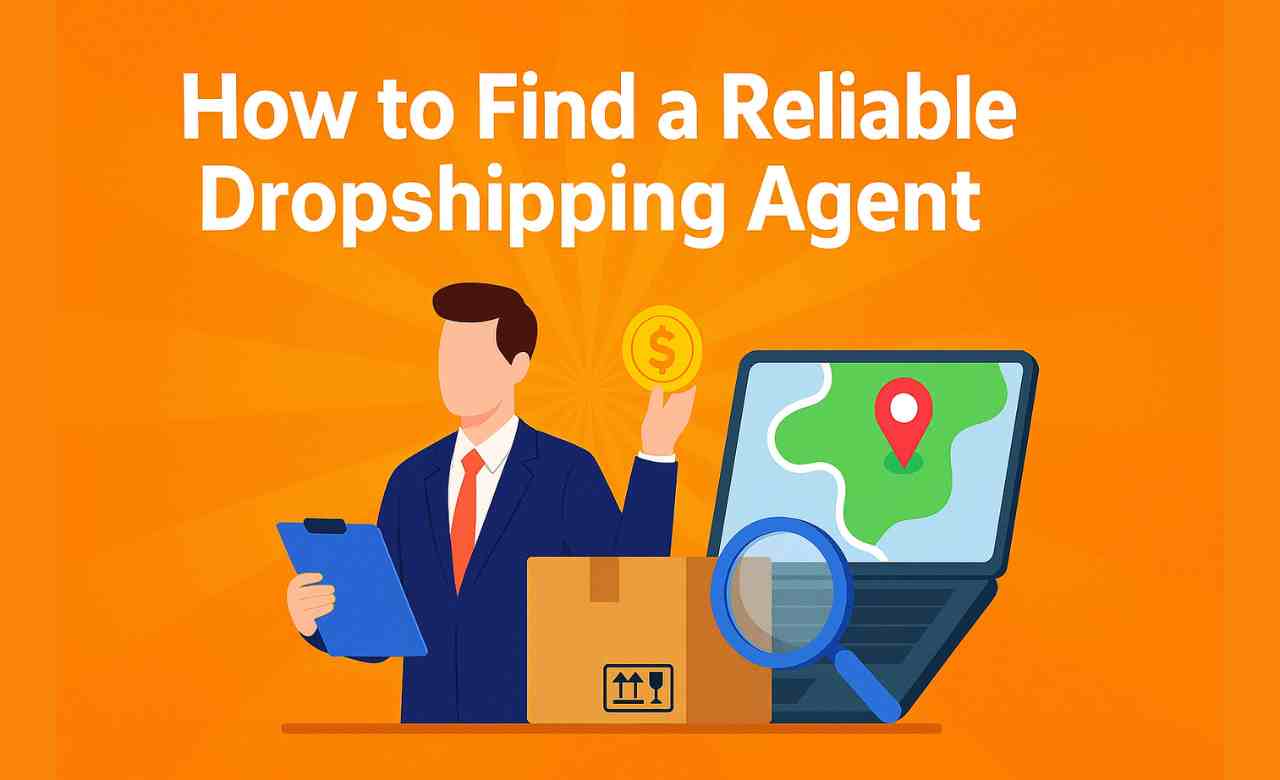Dropshipping has become a buzzworthy topic in the e-commerce space, and for good reason. In this article, we will explore effective dropshipping methods that can help businesses thrive in a competitive marketplace. Understanding these methods is crucial not only for new entrepreneurs but also for seasoned business owners looking to refine their operational strategies and increase profitability. By the time you’re done reading, you will have a comprehensive understanding of various dropshipping methods and how to implement them effectively.
1. What Are Effective Dropshipping Methods?

Dropshipping methods vary widely, and knowing the distinctions can be the key to a successful e-commerce business. Essentially, dropshipping is a retail fulfillment method where the store does not keep the products it sells in stock,making it a one-stop solution for many entrepreneurs. Instead, a dropshipping retailer purchases the item from a third party and has it shipped directly to the customer. But here’s the kicker: understanding the different methods available is essential for finding what best fits your business model.
Among the most effective dropshipping methods, traditional dropshipping operates in a straightforward manner. Sellers list products on their online store, and when an order is made, the seller sends the order details to a supplier or manufacturer who ships the product directly to the customer. This method has low overhead costs but requires careful supplier management.
Print-on-demand is another method that allows sellers to customize products with their designs, appealing mostly to niche markets looking for unique items. It enables businesses to avoid upfront inventory costs while still offering personalized products.
Retail arbitrage takes purchasing a step further by leveraging sales from local retail stores, offering the potential for significant profit margins—if executed correctly.
Ultimately, understanding what each dropshipping method entails helps you craft a tailored approach for your business needs. If you’re interested in delving deeper into these methods, keep reading, because we’ve got valuable insights lined up for you.
| Dropshipping Method | Key Description | Pros | Cons |
|---|---|---|---|
| Traditional Dropshipping | Purchase items from suppliers once sold | Low upfront costs | Reliant on supplier availability |
| Print-on-Demand | Customized product creation | Unique offerings | Longer shipping times |
| Retail Arbitrage | Source discounted products from retail stores | High potential profit margins | Market saturation and pricing pressures |
2. How Does the Traditional Dropshipping Method Work?
The traditional dropshipping method serves as the backbone of e-commerce for many entrepreneurs. So, how exactly does it operate? At its core, traditional dropshipping involves a straightforward supply chain. Retailers list products on their online platforms without holding any inventory. When a customer orders a product, the retailer transmits that order to a supplier who then ships the product directly to the customer. What’s important here is the operational flow: retailer to supplier to customer.
One of the significant advantages of this method is the low barrier to entry. Entrepreneurs can start their online stores without investing heavily in inventory. But here’s where it gets interesting: while low costs are enticing, success relies heavily on finding reliable suppliers who deliver quality products on time.
Moreover, traditional dropshipping enables flexibility in product offerings. Retailers can easily add or remove items from their catalog based on market demand. However, they must manage their relationships with suppliers to maintain quality control and timely shipping.
To put it into perspective, let’s look at a case study: Haul2, a growing online retailer, started with traditional dropshipping. They focused on niche fitness gear, partnering with suppliers known for high-quality products and efficient shipping times. As they scaled, they emphasized building strong relationships with suppliers, which ultimately increased their customer satisfaction rates.
In summary, the traditional dropshipping method is appealing due to its low startup costs and flexibility. However, success hinges on maintaining excellent supplier relationships and ensuring timely order fulfillment.
| Feature | Details |
|---|---|
| Supplier Management | Building relationships with suppliers |
| Flexibility in Product Offerings | Ability to adjust product listings easily |
| Risk Factors | Reliance on supplier performance |
| Profit Margins | Varies based on competition and pricing |
3. What Is the Print-on-Demand Dropshipping Method?
Print-on-demand (POD) is a dropshipping model that offers an exciting avenue for creative entrepreneurs. This method allows sellers to customize products with their designs or branding, making it particularly appealing. So, how does print-on-demand work?
When a customer places an order, the product is created, printed, and shipped directly from a third-party supplier. As a result, sellers do not have to maintain inventory or worry about unsold goods. Here’s the real story: this model is particularly advantageous for those looking to sell unique, personalized items such as t-shirts, mugs, or even wall art.
Many successful brands have used print-on-demand to tap into niche markets. For instance, a seller specializing in eco-friendly designs can use POD services to offer organic cotton t-shirts with custom prints. The absence of upfront inventory significantly reduces risk, as sellers only pay for products after they make a sale.
However, like any method, there are drawbacks. Production times can be longer than traditional methods, and some POD services might charge higher rates for quality. Additionally, the reliance on suppliers can sometimes lead to inconsistent quality, which can affect brand reputation.
In summary, print-on-demand presents unique opportunities for businesses willing to be creative. While there are challenges along the way, this method offers a flexible entry point into the e-commerce space without the burdens of traditional inventory management.
| Advantages | Disadvantages |
|---|---|
| Low startup costs | Longer production times |
| Customization options | Potential quality inconsistencies |
| Niche market appeal | Higher costs per unit than bulk purchasing |
4. How Does the Retail Arbitrage Dropshipping Method Operate?

Dropshipping through retail arbitrage is a fascinating method that many entrepreneurs find alluring. So, what makes this approach distinctive?
Retail arbitrage involves sourcing products from retail stores and reselling them online at a higher price. Here’s the kicker: this method leverages local discounts and clearance sales to acquire inventory that can yield significant profit margins. The key is to find products at reduced prices, either through promotions or clearance sales, allowing for a substantial markup on resale.
For instance, imagine a retailer who discovers a line of home goods on clearance at a local store. By purchasing these items and listing them on an online platform like Amazon or eBay, they can resell them at regular prices, benefiting from the discount received.
However, navigating retail arbitrage isn’t without its challenges. First off, it requires a keen eye for quality products and prices. Market saturation can diminish profitability, so sellers must continually seek new sources and deals. Furthermore, they must comply with platform policies when listing items, which can sometimes lead to complications around inventory management.
This method is especially appealing for those who enjoy treasure hunting; it’s about the thrill of finding great products at unbeatable prices. To illustrate, one successful entrepreneur used retail arbitrage to fund their full-time e-commerce business, steadily scaling their operation by taking advantage of seasonal sales and clearance items, reinvesting profits back into the business.
In summary, retail arbitrage is an exciting and profitable dropshipping method, but success requires diligence, market awareness, and adaptability.
| Pros | Cons |
|---|---|
| High profit potential | Time-consuming product sourcing |
| Thrill of finding bargains | Market saturation can reduce margins |
| Flexibility to adapt quickly | Compliance risks on sales platforms |
5. What Is Subscription-Based Dropshipping?
Subscription-based dropshipping has gained traction in recent years, leading many brands to explore this method. So, what does it entail? Subscription-based dropshipping revolves around offering products at regular intervals, allowing customers to receive goods on a recurring basis. This model is attractive because it builds consistent revenue streams while fostering customer loyalty.
The success of subscription boxes hinges on curating products that cater to specific interests or needs. For example, a beauty box filled with skincare and makeup products delivered monthly can retain customers eager to try new products. The beauty of this strategy is that it allows brands to offer personalized experiences, which can lead to higher retention rates.
But here’s where it gets interesting: while subscription models can be lucrative, they come with their own challenges. Curating high-quality products consistently is paramount; if customers receive items that don’t meet expectations, they may cancel their subscriptions. Moreover, brands must navigate complex logistics to ensure timely deliveries.
Take for instance a successful subscription service that focuses on gourmet snacks. They established partnerships with local vendors to provide unique products, emphasizing quality and variety. To add value, they engage with subscribers through social media and solicit feedback, making adjustments based on preferences.
In summary, subscription-based dropshipping can create recurring revenue, but maintaining quality and customer satisfaction is essential for sustained success. Adapting to consumer tastes and preferences will ultimately determine the longevity of a subscription service.
| Advantages | Challenges |
|---|---|
| Steady revenue stream | Managing customer expectations |
| Builds brand loyalty | Complex logistics for timely delivery |
| Personalized customer experience | Risk of high churn rates |
6. How Do Online Marketplaces Affect Dropshipping Methods?
Online marketplaces have transformed how businesses approach dropshipping, serving as powerful platforms for reaching broader audiences. So, how do these marketplaces influence the dropshipping landscape?
Entering established platforms like Amazon or eBay can provide instant access to millions of potential customers. These marketplaces offer built-in trust and credibility, which is vital for new sellers. However, success on these platforms isn’t as simple as listing products and waiting for sales.
Here’s the real story: competition is fierce. Many sellers are vying for consumer attention, meaning that pricing and product quality must be top-notch. Additionally, adhering to marketplace rules—such as providing significant customer service and adhering to return policies—is paramount for maintaining good standing.
For example, many successful dropshippers leverage Amazon’s platform by focusing on niche products that align with consumer demand. Understanding how to optimize listings for search visibility is critical; effective keyword usage and compelling product descriptions can significantly increase conversion rates.
Yet, market conditions can sharply shift. Sellers face challenges when marketplace policies change, such as commission rates or shipping rules. Staying informed about these shifts is essential for adapting and remaining competitive.
In summary, online marketplaces can greatly enhance dropshipping opportunities, but sellers must navigate the complexities of a highly competitive environment while adhering to platform rules.
| Marketplace | Advantages | Challenges |
|---|---|---|
| Amazon | Access to a vast customer base | High competition and cost of fees |
| eBay | No upfront costs for listing items | Policy compliance risks |
| Etsy | Niche-focused community | Unique product offerings required |
7. What Role Does Technology Play in Dropshipping Methods?
Technology serves as the backbone supporting various dropshipping methods. So, how does technology influence the efficacy of these models? From inventory management systems to marketing tools, technology facilitates smoother operations and enhances the overall customer experience.
For instance, inventory management software allows dropshippers to keep track of stock levels and avoid overselling products. This is where it gets interesting: by automating processes, businesses can reduce human error and increase efficiency. Tools like Shopify and Oberlo integrate various functionalities that modern dropshippers rely on, from order tracking to analytics.
Moreover, leveraging data analytics is crucial for making informed decisions. Understanding customer behavior through analytics can help businesses tailor offerings and improve marketing strategies. For example, access to metrics regarding sales trends and customer preferences empowers entrepreneurs to adapt their inventory accordingly and enhance the shopping experience.
Additionally, technology improves customer engagement. Chatbots and customer service software allow businesses to assist customers around the clock, drastically enhancing satisfaction.
In summary, embracing technology in dropshipping can provide a competitive edge. Utilizing the right software and tools will streamline operations, improve customer interactions, and enable data-driven decision-making.
| Technology | Benefits | Applications |
|---|---|---|
| Inventory Management Tools | Real-time stock tracking | Prevent overselling |
| Analytics Software | Informed decision-making | Tailor offerings based on customer data |
| Customer Engagement Tools | 24/7 customer support | Enhance customer satisfaction |
8. How Can I Optimize My Dropshipping Methods?
Optimization is key to ensuring the sustainability and growth of a dropshipping business. So, how can you optimize your dropshipping methods effectively?
First and foremost, focusing on supplier relationships is crucial. Establishing a transparent line of communication with suppliers can help manage expectations and ensure quality products. Regular check-ins and performance evaluations can significantly enhance this relationship; this way, both parties are aligned.
Next, refining order fulfillment processes can lead to improved customer satisfaction. Utilizing tools that automate order processing can ensure timely shipments, allowing businesses to keep customers informed at every stage. Furthermore, optimizing product listings for better visibility in search results will help drive more traffic to your online store.
Another area to focus on is effective marketing strategies. Experimenting with different marketing tactics, such as email campaigns or social media promotions, enables businesses to identify the most effective channels for reaching their target audience. A/B testing campaigns can help determine what resonates best with customers.
Moreover, investing in customer service goes a long way in optimizing the dropshipping experience. Providing prompt and effective support for inquiries or issues fosters loyalty and retention.
In summary, optimizing dropshipping methods involves enhancing supplier relationships, refining order fulfillment, and implementing strategic marketing initiatives. A commitment to continuous improvement will undoubtedly yield positive results.
| Optimization Focus | Actions | Expected Outcomes |
|---|---|---|
| Supplier Relationships | Establish open communication | Improved quality and reliability |
| Order Fulfillment | Automate processes | Timely deliveries and better tracking |
| Marketing Strategies | Experiment and analyze effectiveness | Enhanced customer engagement |
9. What Are the Legal Considerations for Dropshipping Methods?
Navigating the legal landscape is essential for successfully operating a dropshipping business. So, what legal considerations must you keep in mind?
First and foremost, understanding intellectual property laws is crucial. This means you need to ensure that the products you sell do not infringe on copyrights, trademarks, or patents. Failure to comply can lead to severe legal repercussions, including lawsuits or fines.
Moreover, sales tax regulations must be navigated carefully. Each state has different rules regarding sales tax collection, and noncompliance can result in hefty penalties. Ensuring that you understand when and how much sales tax to collect is vital for protecting your business.
Additionally, consumer protection laws require transparency in dealings with customers. Clear return policies, timely responses to inquiries,quality control, and managing customer data in compliance with data protection regulations must all be prioritized.
As an example, a successful dropshipper once faced legal challenges due to a misunderstanding of copyright laws regarding a popular branded item. After realizing the mistake, they restructured their product line to exclusively work with suppliers who offered licensed products, ensuring compliance and peace of mind.
In summary, addressing legal considerations in dropshipping—such as intellectual property rights, sales tax laws, and consumer protections—will help you create a compliant and respected business.
| Legal Consideration | Importance | Action Required |
|---|---|---|
| Intellectual Property | Prevents legal disputes | Research and ensure compliance |
| Sales Tax | Avoidance of penalties | Collect tax according to regulations |
| Consumer Protection | Builds trust with customers | Establish clear policies and practices |
10. How Do Marketing Strategies Vastly Differentiate Dropshipping Methods?
Marketing strategies are the lifeblood of a dropshipping business, and they can greatly influence success. So, how do marketing strategies differ across dropshipping methods?
First, traditional dropshipping often relies on strong SEO practices and content marketing. Given the competitive landscape, creating high-quality content that targets relevant keywords is essential for driving organic traffic. Utilizing social media platforms effectively can also enhance visibility and engagement.
On the other hand, print-on-demand businesses benefit significantly from visual marketing strategies, such as Instagram and Pinterest, to showcase unique designs. What’s the real story? Engaging visuals can create a compelling brand narrative and attract customers who appreciate personalized products.
With retail arbitrage, marketing usually focuses on highlighting deals and unique finds. Utilizing scarcity tactics, such as limited-time offers, can effectively drive urgency in purchase decisions.
For subscription-based models, building a community around the brand is key. Engaging with customers through regular newsletters and exclusive offers can encourage long-term loyalty and reduce churn rates.
In summary, tailoring marketing strategies to align with your specific dropshipping method is non-negotiable for success. Each method requires unique approaches to effectively engage the targeted audience and drive conversions.
| Marketing Method | Best Practice | Key Metrics for Success |
|---|---|---|
| Traditional Dropshipping | SEO and content marketing | Organic traffic and conversion rates |
| Print-on-Demand | Visual marketing on social media | Engagement rates and follower growth |
| Retail Arbitrage | Highlight deals through urgency tactics | Sales volume and margin percentages |
| Subscription Models | Building brand loyalty through community | Retention rates and CLV |
11. What Trends Are Shaping the Future of Dropshipping Methods?
The dropshipping landscape is continuously evolving, and staying ahead of trends is critical. So, what trends are currently shaping the future of dropshipping methods?
One significant trend is the rise of sustainable and eco-friendly products. Consumers are increasingly considering the environmental impact of their purchases, prompting businesses to offer green alternatives. This shift can be an opportunity for dropshippers to cater to ethically conscious consumers.
Another trend is the growing emphasis on data-driven decision-making. Utilizing analytics not only enhances marketing strategies but also helps businesses fine-tune their product offerings and inventory management.
Moreover, technology advancements like AI and machine learning are streamlining operational processes. By automating sales predictions and improving customer service, these tools enable greater efficiency and scalability.
Interestingly, the integration of AR (augmented reality) is also making waves in the dropshipping space. Offerings that allow consumers to visualize products in their own space can significantly enhance the shopping experience and drive sales.
In summary, staying aware of emerging trends such as sustainability, data analytics, technological innovations, and AR will provide dropshippers with the insights needed to make informed decisions. Adapting to these changes will be essential for thriving in the future market.
| Trend | Implications | Expected Outcomes |
|---|---|---|
| Emphasis on Sustainability | Rise in demand for eco-friendly products | Increased market share among conscious consumers |
| Data-Driven Decision Making | Enhanced operational efficiency | Better inventory management and targeting |
| Advancements in AI & Tech | Streamlined processes | Time-saving and cost-reduction |
| Integration of AR | Improved customer engagement | Increased sales through enhanced experiences |
FAQ Section
- Q1: What is dropshipping?
Dropshipping is a retail fulfillment method where a business sells products without keeping inventory, relying on suppliers to ship products directly to customers. - Q2: How does traditional dropshipping work?
Traditional dropshipping involves retailers listing products, and upon receiving an order, the retailer forwards that order to a supplier who ships the products directly to the customer. - Q3: What are the advantages of print-on-demand?
Print-on-demand allows sellers to customize products with their designs, eliminating the need for inventory and reducing upfront costs. - Q4: What challenges come with subscription-based dropshipping?
Subscription-based models require consistent product quality and customer engagement to reduce churn, making it essential to deliver value to subscribers. - Q5: How can technology enhance dropshipping methods?
Technology provides tools for inventory management, order processing, and customer service, streamlining operations and enabling scalability in dropshipping businesses.







